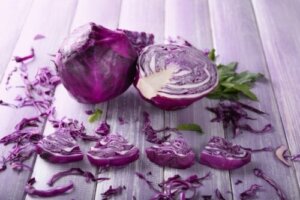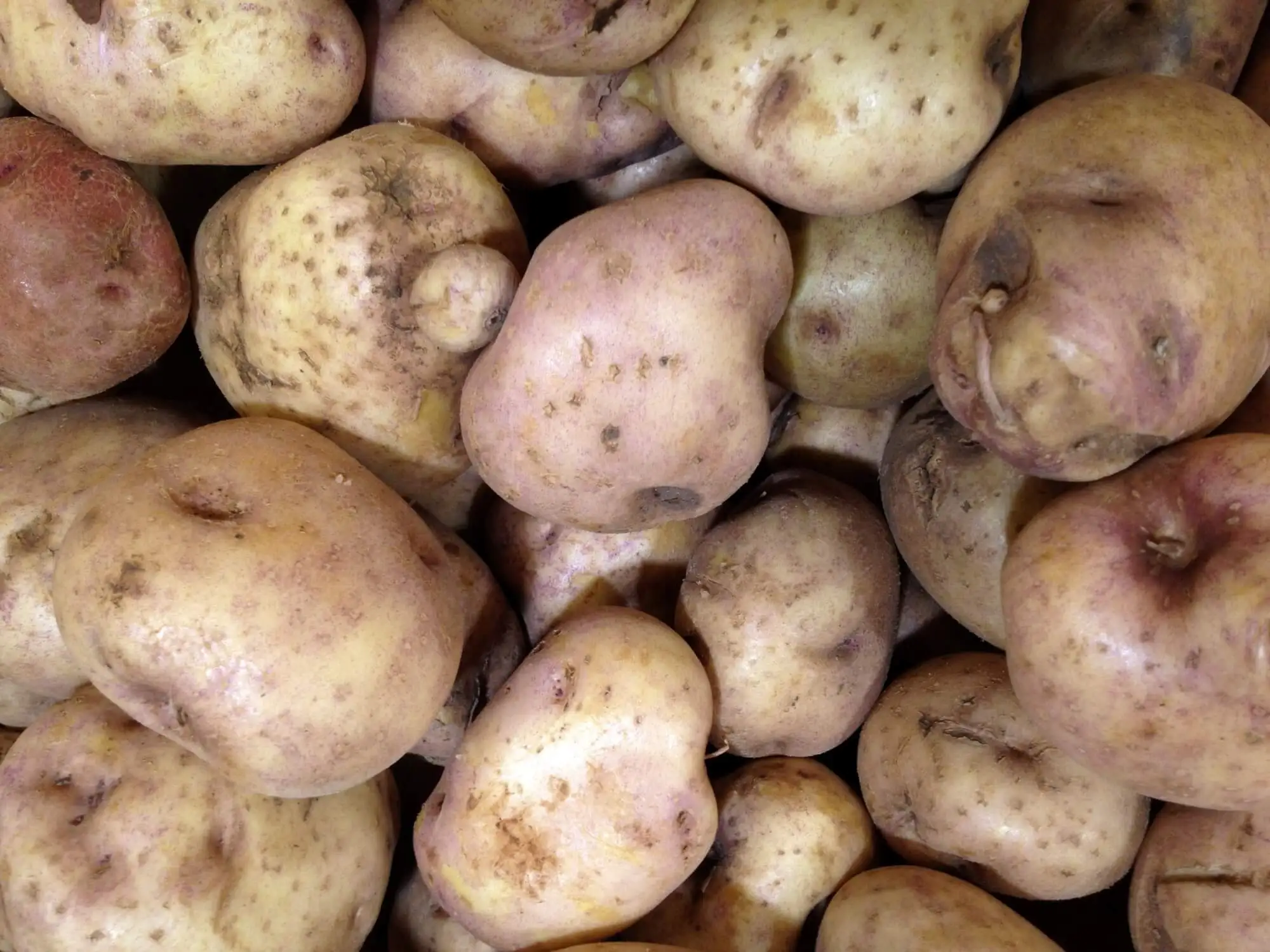What Is Cyanidin and What Is It Used For?


Written and verified by the nutritionist Saúl Sánchez Arias
Cyanidin is an antioxidant chemical compound that’s found in some foods and can act as a colorant in several products. It’s included in the group of anthocyanins, characteristic of purple-colored fruit and vegetables such as blueberries, blackberries, and eggplants. Its consumption is recommended to maintain good health by various mechanisms that we’ll discuss below.
It’s worth noting that the inclusion of phytonutrients in the diet is considered essential in order to reduce the evolution of many chronic and complex pathologies. Experts recommend the intake of 5 servings of fruits and vegetables every day. These foods also contain quality micronutrients such as vitamins and minerals.
Where is cyanidin found?
In general terms, red cabbage, Peruvian potatoes and Mexican magenta corn are the main sources of cyanidin that can be included in the diet. But beware, even though these elements act as a red or purple pigment, they may not be used by the industry to improve the organoleptic characteristics of their products. Sometimes, artificial additives are added instead, so it’s always important to check the nutritional labeling.

From a chemical point of view, cyanidin is known as “cyanidol” and its structure is similar to that of other anthocyanins. Examples of these are pelargonidin, malvidin, petunidin, peonidin, etc. They’re composed of a flavone nucleus with two aromatic rings. In total, there are three rings whose double bonds are responsible for pigmentation.
Read more: 4 Benefits of Anthocyanins for Your Health
Benefits of cyanidin
First of all, anthocyanins have been shown to protect against the development of neurodegenerative pathologies, such as dementia. By blocking the formation of free radicals and their accumulation in tissues, possible damage and mutations in mitochondria and cellular DNA are reduced, thus delaying aging and its ailments.
Moreover, regular intake of this type of compound would also be beneficial in preventing alterations in the functioning of the cardiovascular system. A study published in the journal Molecular Aspects of Medicine confirms this.
The antioxidant power prevents the degradation of lipoproteins and an increase in the rigidity of artery walls. Both mechanisms could be related to atherosclerosis, which compromises tissue irrigation.
We shouldn’t forget the effect of these pigments in helping to combat obesity and metabolic disorders either. Among the latter we would especially highlight type 2 diabetes.
According to research published in Nutrients, they manage to control inflammation in the internal environment, which is associated with a better hormonal environment and optimal functioning of the intestinal microbiota.
Contraindications of cyanidin

All that glitters isn’t gold. Although dietary intake through foods containing cyanidin is considered positive, supplementation with this compound may have contraindications in some cases.
It’s clear that it can be positive to prevent aging and some pathologies. However, in contexts of intense exercise it could impair cellular communication, which is key to ensuring subsequent adaptations.
In these cases, muscle strength gains and hypertrophy would be impaired. For this reason, its application in athletes isn’t recommended in too high doses. However, when the athlete goes through a period of high stress and lots of competitions, a supplement could be included to stimulate subsequent recovery.
After all, cyanidin will neutralize the formation of free radicals and reduce the markers of muscle damage. However, it should always be carried out in short periods of time of no more than one or two weeks.
You may be interested in: Does Collagen Help to Gain Muscle Mass?
Cyanidin, a type of anthocyanin beneficial to health
As you have seen, regularly including cyanidin in the diet is considered positive for health. This phytochemical will help to control the internal inflammatory and redox balance, and achieve greater efficiency in the body.
It’s clear that both processes are important, but this substance shouldn’t be taken in excess, in order ro prevent changes in organ function.
Finally, a varied consumption of vegetables in our diets is essential. Not only phytochemicals have this antioxidant capacity, but also some vitamins, such as vitamin E, can play a similar role.
The ideal thing is to consume several different types of products to meet the daily demands, thus avoiding the development of chronic and complex pathologies over the years. In addition, other good habits, such as physical activity, should be promoted.
All cited sources were thoroughly reviewed by our team to ensure their quality, reliability, currency, and validity. The bibliography of this article was considered reliable and of academic or scientific accuracy.
- Suresh S, Begum RF, Singh S A, V C. Anthocyanin as a therapeutic in Alzheimer’s disease: A systematic review of preclinical evidences. Ageing Res Rev. 2022;76:101595. doi:10.1016/j.arr.2022.101595
- Cassidy A. Berry anthocyanin intake and cardiovascular health. Mol Aspects Med. 2018;61:76-82. doi:10.1016/j.mam.2017.05.002
- Lee YM, Yoon Y, Yoon H, Park HM, Song S, Yeum KJ. Dietary Anthocyanins against Obesity and Inflammation. Nutrients. 2017;9(10):1089. Published 2017 Oct 1. doi:10.3390/nu9101089
This text is provided for informational purposes only and does not replace consultation with a professional. If in doubt, consult your specialist.








